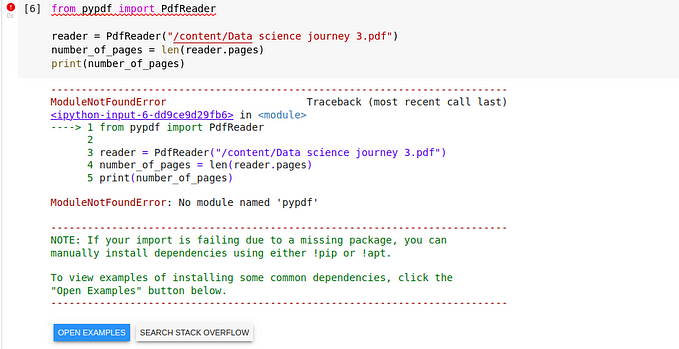US HealthCare Terminologies Explained — Part 3
This is the third part of US Healthcare Basics. If you haven’t studied parts 1 and 2, it will be hard to understand part 3, so please read parts 1 and 2 before starting part 3. In this part, I will discuss some missing terminologies associated with Healthcare systems in the previous blogs.

- SSN(Social Security Number): According to Wikipedia, a Social Security number is a nine-digit number issued to U.S. citizens, permanent residents, and temporary residents under section 205 of the Social Security Act. The number is used to track the earnings history of U.S. citizens, permanent residents, and certain non-immigrant workers.
- TOS(type of service): TOS refers to the medical code used to refer to the type of healthcare service provided to the patient.TOS codes are used by healthcare providers, facilities, and insurance companies to bill and reimburse for healthcare services accurately. For example, TOS 1 refers to medical care, TOS 2 refers to surgical services etc.
- Billing Provider: In the US healthcare system, billing providers are entities that submit claims for healthcare services provided(by hospitals)to patients and insurance companies in order to receive payment from insurance companies, government programs, or patients directly.
- Healthcare Common Procedure Coding System(HCPCS) Code: HCPCS is a collection of standardized codes that represent medical procedures, supplies, products and services. The codes are used to facilitate the processing of health insurance claims by Medicare and other insurers.
- Network flag: A network flag is a code or indicator used by insurance companies to identify whether a healthcare provider(healthcare professionals) or facility(location of health service) is in-network or out-of-network.
- Benefit Code: Benefit codes are alphanumeric codes that are used to determine the coverage and payment for specific healthcare services under a health insurance plan. They help communicate the type of service rendered or benefit provided to the insurance company or payer. By using the appropriate benefit codes, healthcare providers can ensure accurate claims and reimbursement for the services they provide during the medical billing and coding process.
- Adjudication code: Adjudication code refers to the outcome of a claim or reimbursement request submitted to an insurance company or payer by healthcare providers. During the processing of a healthcare claim, it undergoes a process called adjudication, wherein the insurance company or payer carefully examines the claim to ensure its accuracy, assesses the coverage and benefits applicable, and calculates the reimbursement amount to be provided.
- Adjunction date: Adjudication date refers to the specific date on which a claim or reimbursement request is reviewed and processed by the insurance company or payer during the adjudication process.
- Billed amount vs Allowed amount: Billed amount represent the total amount that the healthcare provider invoices or bills for the services rendered. It is the initial amount that the provider claim to the insurance company or payer for reimbursement. But, the allowed amount refers to the reimbursable amount or approved amount. It is the maximum amount that the insurance company or payer agrees to pay for the particular healthcare service.
- Coordination of benefits paid amount: The coordination of benefits paid amount refers to the portion of a healthcare claim that is paid by the secondary insurance company in a situation where an individual has multiple insurance policies.
- insurance check number: An insurance check number is a unique identifier assigned to a payment check issued by an insurance company to a healthcare provider for a claim. It helps providers track and reconcile their payments, ensuring accurate financial records.
- Authorization number/Approval code: It is a unique identifier assigned by an insurance company or payer to indicate approval for a specific healthcare service. It serves as confirmation that the insurance company has authorized coverage for the claimed healthcare service.
- rev/ Revenue code: Revenue codes are a standardized set of codes used to categorize different types of services or items provided by healthcare facilities for billing and reporting purposes. For example, a revenue code might indicate services provided in the emergency department, laboratory tests, or pharmacy supplies. These codes help in tracking and reporting financial information within healthcare organizations and facilitate proper reimbursement processes.
- MRN(Medical Record Number): The unique identifier the provider assigns to reference a single patient.
- HICN(Health insurance claim number): A health insurance claim number is a unique identifier assigned to each health insurance claim. It is provided by the health insurance company or the administrator(medical biller) handling the claims process.
- DEA number: A DEA Registration Number is a unique identifier provided by the Drug Enforcement Agency to medical practitioners like pharmacists, nurse practitioners, doctors, dentists, etc… allowing them to prescribe, dispense and administer drugs defined to be Controlled Dangerous Substances (CDS).
- NABP(National Association of Boards of Pharmacy number): NABP is an organization in the United States that works to support the state boards of pharmacy in protecting public health by ensuring the safe and effective use of medications.
- Formulary: Formulary is a list of medications/drugs covered by a health insurance plan.
- Formulary plan code: The formulary plan code is a unique identifier assigned to a particular health insurance plan’s formulary. It helps distinguish the formulary of one plan from another, particularly in systems or databases that handle multiple plans.
- Formulary flag: Formulary flag is a symbol/indicator, used to identify whether a specific medication is included in the formulary and the associated coverage details.
- NDC(National Drug Code): It is a universal unique product identifier for human drugs in the united states. It is a three-segment number that identifies the labeler(4 or 5 digits, identifies manufacturer/distributor), product(3 or 4 digits, identifies the specific drug product including strength and dosage form) and package code(2 or 3 digit, identifies package size and type)

- PBM(Pharmacy Benefit Manager): According to NAIC(National Association of Insurance Commissioners), Pharmacy Benefit Managers (PBMs) are third-party companies that function as intermediaries between insurance providers and pharmaceutical manufacturers.BMs create formularies, negotiate rebates (discounts paid by a drug manufacturer to a PBM) with manufacturers, process claims, create pharmacy networks, review drug utilization, and occasionally manage to mail-order speciality pharmacies.
- DAW(Dispensed as Written): Dispensed as Written” (DAW) is an instruction that can be included on a prescription by a prescriber (or healthcare provider) and indicates that the prescriber wants the pharmacist to dispense the exact brand-name medication prescribed, rather than substituting it with a generic equivalent or another brand.
- dispensing fee: A dispensing fee is a charge that pharmacies add to the cost of prescription medication to cover the cost associated with dispensing the medication. In easy words, It is a service fee that compensates the pharmacy for activities such as receiving, verifying, and filling prescriptions, providing patient counselling, maintaining records, and managing inventory.
- usual, customary and reasonable (UCR)fee: The amount paid for a medical service in a geographic area based on what providers in the area usually charge for the same or similar medical service. In other words, It refers to the allowed amount or reimbursement rates that insurance companies consider to be reasonable charges for medical services or procedures in a specific geographic area.
- Overpayment, offset adjustment, reversal and refund: Overpayment occurs when an insurance company or patient pays more than the actual cost of medical service or treatment. Overpayments can occur due to billing errors, incorrect coding, or other administrative mistakes. Offset adjustment refers to the process of deducting or offsetting an overpayment from the invoice or future payment, or sometime refunding the offset amount. Reversal refers to the cancellation or reversal of a financial transaction that has already been processed. Refund is the process of returning the overpaid amount to the patient/entity who made the excess payment.
- SBC(Summary of Benefits and Coverage) Document: SBC documents are standardized summaries that provide clear and concise information about health insurance plans to help individuals compare and understand their coverage options. It includes coverage overview, cost sharing, examples of coverage, limitations and exceptions, coverage period, contact information etc. You can find sample SBC document here.
- Schedule of Benefits(SOB) Document: Schedule of Benefits is a document that outlines the fees associated with each type of health care service covered by your plan. You can find sample EOB document here.
- EOB(Explanation of Benefits) Document: It’s a document provided by health insurance companies to their members, detailing the costs and payments associated with a healthcare service or medical claim.Let’s understand it more clearly. When who have taken particular healthcare services covered by your health insurance, the healthcare provider(Hospital/Doctor) submits a claim to your insurance company. After processing the claim, the insurance company sends you an EOB. You can find sample EOB document here.
At last, I hope that you understand all the terminologies explained above and gain more insight into US healthcare. If you have any doubt on the terminologies explained above please don’t forget to comment. If you like my content please don’t forget to clap and follow me on medium. See you in the next blog!








